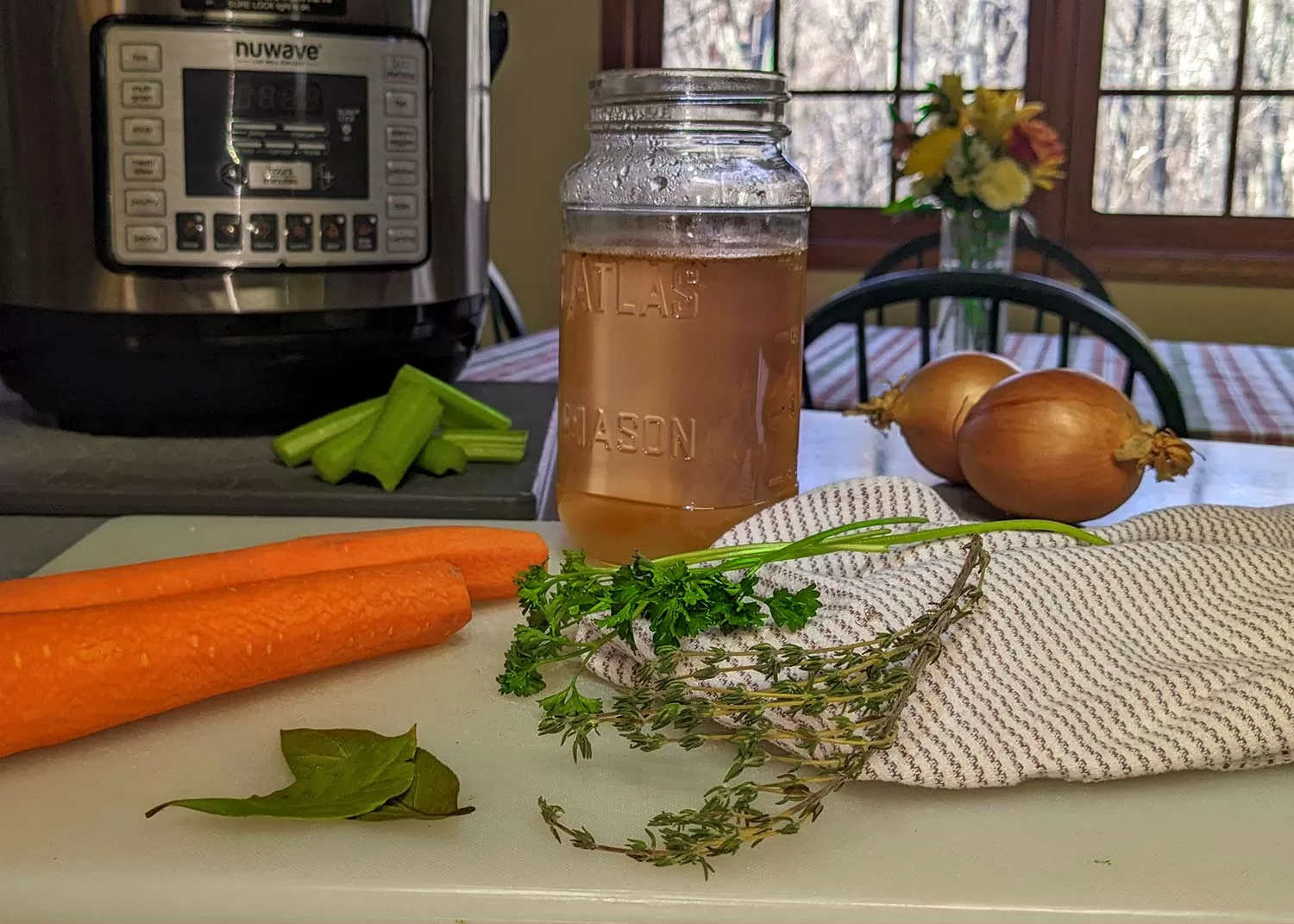The foundation of a good meat stock follows the same vein of preparation. The key is to leach out the gelatin and collagen-rich parts from the animal carcass through an extended simmering process. Turkey stock production, the base of numerous fine delicacies, proves to be the desired outcome of a successful boil.
A common question I get is here at the country store is “What’s the difference between a turkey broth and a turkey stock?”
The simple answer is:
- Broth: A strained liquid, extracted from protein tissue, containing the essence of chicken, beef or fish. Simmering the meat in clear liquid imparts the flavor of the protein. Minimal seasoning is added.
- Stock: A strained liquid resulting from lengthy cooking and reduction of water, bones, meat, vegetables and seasoning. Simmering or pressure cooking the ingredients in clear liquid extract the hearty elements that form a base for soups and sauces.
A quick search across the internet will yield thousands of protein powered stock ideas with a myriad of flavoring agents. We keep it simple with the basic vegetable mix of rough chopped celery, carrots and onions. I add the trinity of a traditional bouquet garni. That is made up of parsley stalks, bay leaves and thyme. You can toss in an optional dozen black peppercorns.
Once you have gathered your flavor agents, retrieve your Turkey Carcass. Place it all in your stock pot and start the extraction/reduction simmer.

This recipe will yield a savory stock after the suggested simmer time. The images show the use of a stove-top pressure cooker. Using a traditional Insta-pot type cooker allows the ingredients to meld together at temperatures that rise above 212°F. Using pressure cookers will cut your preparation time in half.
Our Thanksgiving Day After, Poultry Stock
Course: DinnerCuisine: American20
minutes4
hours20
minutes4
hours40
minutesIngredients
2 Celery stalks and Tops
1 medium to large yellow onion, cut into thick wedges
1 to 2 carrots, roughly chopped. (Tops can be included)
Several sprigs fresh parsley
1 to 2 sprigs fresh thyme, or 1 teaspoon dried thyme
1 bay leaf
5 to 10 peppercorns
Optional : Kosher salt
Optional: Freshly ground black pepper
Optional: Cheesecloth for straining stock liquid
Directions
- Remove the useable Turkey meat: Save the leftovers for making sandwiches and for adding to the soup once the stock is made.
- Place the turkey carcass, neck (if you haven’t cooked it with the turkey), leftover skin and bones into an 8 to 12 quart stock pot. Add any drippings that were reserved on Thanksgiving meal day and any giblets
- Cover the leftover meat parts with COLD WATER by an inch
- Add thickly sliced onion, chopped carrots, celery, celery tops, parsley, thyme, a bay leaf, and the peppercorns to the pot.
- Bring to a boil on high heat, then lower the heat to keep the stock to a bare simmer. As it simmers, skim off any foamy fats that may float to the surface of the stock from time to time.
- Optional Step: Add salt and additional pepper to Stock Pot. (Since we’ll be making homemade soup with this stock down the line we skip this step at the simmer stage and add our spices during the soup preparation.)
- Simmer for 4 hours: Simmer partially covered. Continue to skim off fats and crud.
- After 4 hours of a low simmer, remove the bones and vegetables from the pot. Then strain the stock through a fine mesh sieve or Cheesecloth lined strainer.
- Optional Steps: If making stock for future use you may want to reduce the stock by cooking it uncovered for a bit longer., This will make it more concentrated. We like to store the concentrated turkey stock in Ice Cube trays. That way we get to add them to homemade soup bowls for more flavoring.
Notes
- Meal Prep: When preparing your Turkey for roasting, remember to set aside the neck bones and giblets for stocking-making.
- Pro-Tip: Cut up your simmer veggies and toss them in a gallon food bag during Thanksgiving Day meal preparation.
- Meal Serve: Once the Turkey is done reserve any bird drippings for use in the Turkey Stock..
- Make sure your 8 to 12 quart stock pot is available.
- Pro Tip: If you are working with a large turkey carcass, you may want to break up the bones a bit so they fit better in the pot.
- Pro Tip: If you don’t have a fine mesh sieve, use a colander strainer and line it with cheesecloth.


Leave a Reply